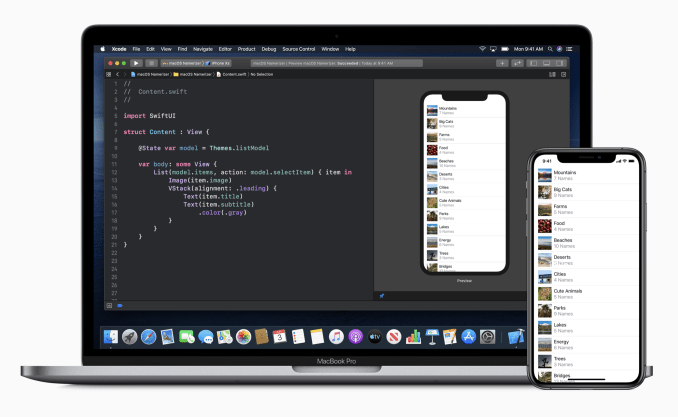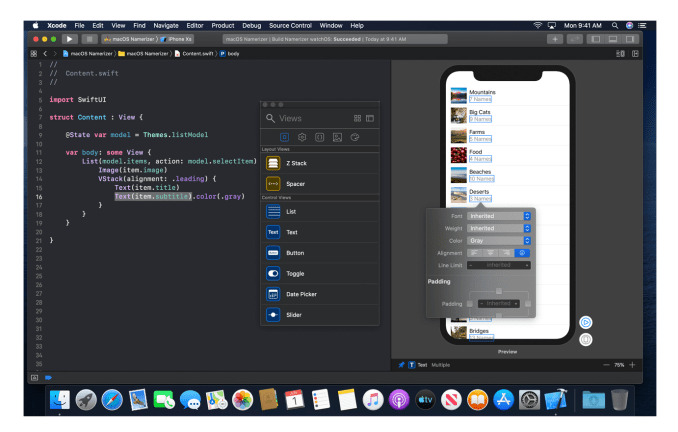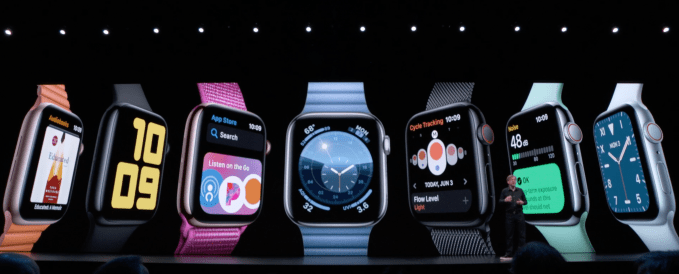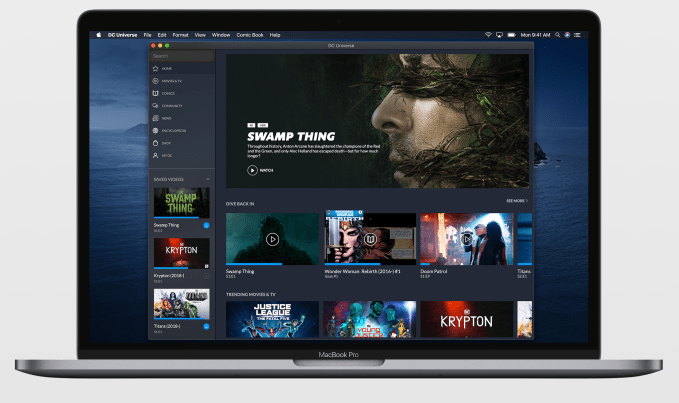In this blog you can visit new technology latest news about advance technology viral news latest andriod phones and much more visit this blog for more updates daily thanks
Wednesday, 5 June 2019
Peloton IPO, VC alternatives, privacy at Apple, and cybersecurity returns
ICYMI: As Peloton files for IPO, can its live fitness gamification model extend to other verticals?
Peloton confidentially filed for its IPO today, and the juggernaut fitness company is positioned to be one of the most interesting consumer debuts in the upcoming IPO season now that Uber has cleared the hurdle.
Extra Crunch’s media columnist Eric Peckham interviewed Zwift CEO Eric Min last month about the live video model that Peloton pioneered, and explored whether ‘Peloton for X’ is the next wave of consumers startups. If you missed it, be sure to read it now.
Which type of funding is actually best for your business?
Fundraising is hard. We explored how to generate FOMO among VCs in Eric’s column last week, but this week, we wanted to explore the routes to funding a startup, and whether venture capital is even the right option.
from Apple – TechCrunch https://tcrn.ch/2WndBrf
Tuesday, 4 June 2019
A closer look at the best new iOS, macOS and watchOS features from WWDC
As expected, there was a lot at yesterday’s big WWDC keynote. In fact, you got the sense watching the whole thing unfold that Apple had to race through a number of its new features to cram everything into the two-hour-plus event.
For many, the new Mac Pro was the star of the show, but for Apple, the clear the focus was on software. The company is keenly aware as hardware sales slow that its future is all about software, services and content. This week at the show, we got a guided look through the best new features iOS, macOS and watchOS have to offer.
No surprise, iOS 13 brings the biggest changes of the bunch. Dark Mode is the highlight so to speak. The feature has the same selling points as it does on other operating systems — namely being easier on the eyes and the battery. With a touch in settings, users can turn set it as a constant or have it switch when the sun goes down.
The feature swaps in dark wallpapers and will work with all of Apple’s native apps. Third-party supports is coming as well and will be a part of its development platforms like Swift, going forward.

Apple Maps, a major underdog at launch, continues to get some key upgrades. Most notable is Lookaround — a competitor to Google’s longstanding Street View, which brings seamlessly stitched photographs to help users better navigate around. The feature was extremely smooth in our brief demo. It’s hard to say how it will behave on cellular networks out on the street, but the preview was certainly impressive.
Imaging is a key part of every iOS upgrade, and this one’s no different. Photo editing has been much improved, with more pro-style control over aspects like white balance, contrast, sharpening and noise reduction.

There are some handy dummy proof additions as well, like the ability to adjust saturation without impacting flesh tones. iOS’s editing tools are coming to video as well, this time out, with the ability to adjust settings and even rotate orientation. The photos app also gets a new dynamic view that groups images by occasions like birthdays, giving you another opportunity to mark the unwavering march of time.
This year’s show marked a big moment for iPad as well, as the tablet’s operating system broke free from iOS. For users, that primarily means more functionality on the larger screen, including the ability to to open up multiple windows of the same app for additional multitasking. That joins various other features like improved gesture based highlighting and cut and paste that help iPadOS behave more like a PC.
Far and away the most exciting addition here, however, is actually on the mac side. macOS Catalina brings Duet/Luna style second screen functionality to the tablet, letting it serve as an external monitor. The feature can be used wirelessly (over bluetooth) or tethered.

Our demo was the latter (WWDC is a busy place for wireless signals), but operated pretty flawlessly in spite of some complicated demands. With an iPad Pro, users can draw with the Apple Pencil. There’s also a handy Touch Bar-style menu tray at that populates the bottom of the iPad display.

A couple of watchOS additions are worth mentioning, as well. The most significant is native menstrual cycle tracking. The feature, which is also coming to iOS, gives users a way to keep track of another key aspect of health.
Other additions to the wearable operating system include a native app for audiobooks and a noise app that uses the watch’s built in mics to alert wearers of loud sounds that can lead to hearing loss.
from Apple – TechCrunch https://tcrn.ch/2WasPLi
Apple looks to recharge its broader app ecosystem at WWDC 2019
Developer tools don’t tend to make headlines outside the tech ecosystem. But the developer tools announced at Apple’s Worldwide Developer Conference this week could have a significant impact on both the number of apps and, potentially, the quality of apps available to consumers across Apple’s numerous platforms — including all those that aren’t iPhone — like macOS, watchOS, tvOS and now iPadOS.
One thing in particular developers can’t stop talking about on the sidelines of the event this week is SwiftUI.
Five years ago, Apple moved to make development easier with the launch of its Swift programming language. At WWDC this week, it expanded on that vision with the launch of a new user interface framework, called SwiftUI. The framework, built from the ground up, is designed to help developers build a full-featured user interface with smooth animations using simple, declarative code.

For developers, this means they can save a lot of time by way of SwiftUI’s automatic functionality when it comes to designing apps that are both well-designed and less buggy. Or, as Apple explained to developers, “it’s not just less code, it’s better code.”
Its simplicity is meant to eliminate entire categories of errors that could otherwise crop up; its code is easy to read — like having someone explain a user interface to you; and it lets developers reuse more code across platforms.
It also allows for iteration to become much faster. If a developer later wants to change a part of their app’s user interface, it’s a much quicker, easier change.
SwiftUI’s framework helps with interface layout, adapting apps for iOS 13’s new Dark Mode, accessibility, right-to-left language support and internationalization, among other things. Just as important, SwiftUI can be used across Apple’s app ecosystem by way of the same API built into iOS, iPadOS, macOS, watchOS and tvOS.
That could kickstart cross-platform development from those publishers who previously focused only on iOS, if they were to adopt the new framework in their existing apps.
To what extent they will do so depends on their app’s specifics, but SwiftUI will appeal to new developers as well as novices looking to get started for the first time.
The SwiftUI news comes alongside a new version of Xcode — Xcode 11 — that now includes a graphical UI design tool that will allow developers to build a user interface via SwiftUI, without having to write code.
The Swift code is automatically generated as changes to the UI are made within the visual design tool. Developers can then see real-time previews of how their apps will look and how they work by running them on connected devices like iPhone, iPad, iPod Touch, Apple Watch and Apple TV.
This allows them to test how their code works with each platform, ranging from how the app responds to multi-touch or how it works with the camera or other sensors during the development process itself.
Watch apps
For watchOS, SwiftUI solves the problems around the complexities of building animations and effects for Watch apps — something that limited some developers from focusing on Watch as an app platform.

The framework will support building Watch apps with features like swipe to delete, reordering list items, carousel sliding and direct access to the digital crown.
The Watch is also getting its own on-device App Store and standalone apps that can be installed even without an iOS counterpart. (Or even an iPhone.)
With standalone apps, developers can break off their Watch app from iOS and even specify the Watch as a standalone push target — meaning they can send notifications only to the Watch, not all the user’s platforms.

Watch apps will also be able to support CloudKit subscriptions and complication pushes to keep users up to date. And because Watch apps can now target users who aren’t using the iPhone version of the app, they can also offer text fields where users can enter a username and password to sign up for an app from their wrist or they can use the Sign in with Apple button, also newly announced (and even required, in some cases.)
Watch apps can also now stream audio, which paves the way for a different kind of app than what was previously possible. It’s not hard to imagine — as demoed — an app that streams live sports or music from an internet-based streaming service like Pandora.
In addition, a new extended runtime for watchOS could prompt the development of another kind of Watch app that still runs even after the user lowers their wrist.
For example, apps focused on self-care, mindfulness, physical therapy, smart alarms or health monitoring could take advantage of this to create new experiences aimed at Watch users.
The original version of the Watch app ecosystem was slowed not only because of the complexity of building apps, but the constraints placed on developers that didn’t allow them to target the wrist in certain ways. Instead of thinking what makes sense on the wrist — apps that use sensors or stream audio, for example — developers made more basic ports of existing iOS apps.
Not surprisingly, many of those failed and were later removed. This is Apple’s attempt to give the Watch app ecosystem a second go.
macOS apps
For the Mac, new developer tools announced at WWDC will help iOS developers reach Mac’s 100 million active users.
Apple said it realized that a number of native iPad apps would look great on the Mac, but developers didn’t have the time to use AppKit to port apps over. So this year, it introduced technology that would allow developers to take an iPadOS app and bring it to Mac with “minimal” effort.
It spoke of the current ecosystem of more than a million iPad apps, many of which it believes would make sense on the Mac, too.

As part of this effort, Apple ported 40 frameworks from iOS to Mac, and almost the entire iOS API set with only a few exceptions. This was achieved by adapting UIKit as a native framework and integrating it directly into macOS with the new release, macOS Catalina, Apple said.
In addition, Apple made porting an iPad app to Mac a three-step process.
And the first step is literally checking a box in Xcode’s project editor that says “Mac.”
In Xcode, when you make a change to your source, all your apps will update automatically — including those on iOS/iPadOS and Mac.
Developers were told they need a great iPad app that supports best practices to begin with, and then should customize it for Mac by adding Mac-specific features like Full Menus, Toolbars, Hover events, Touch Bar and more, where appropriate.
It’s not literally a checkbox to make a great Mac app, but it is much less work.
The question, however, remains about how much Apple will enforce the “great” iPad app requirements. It says developers should adopt iPad best practices, like supporting external keyboards or leveraging other key technologies, like Metal, for optimal results.
However, if Apple really just wants to flesh out its Mac App Store with more apps — and more revenue-generating apps — it may not insist on this level of great iPad design.

The company already tested this process with a dozen developers before WWDC, including American Airlines, Crew, DC Universe, Post It, Twitter, Tripit, Fender, Asphalt 9, Jira and others.
iPadOS
Meanwhile, iOS running on the iPad got its own rebrand with the introduction of iPadOS.
The iPad has been powered by iOS since launch, but over time it developed its own set of specific features designed for the larger canvas, like slideover, split view, drag-and-drop and support for Apple Pencil, for example.

For starters, iPadOS will have a tighter grid of homescreen icons, which means there’s more room for developers’ apps. And app widgets can now be pinned to the homescreen, which is another way that iPad apps get to take up space… and users’ attention.
But where iPad excels is in becoming an alternative to a notebook computer for productivity, and in the creative arts, such as sketching and digital art, for example.
For productivity app developers, iPadOS’s new ability to pop out separate windows of an app — more like a “real” computer — will be useful, as will the addition of App Exposé, and new gestures like the three-finger copy, cut, paste and undo gestures.
In terms of developer-specific tools, a new PencilKit API will allow third-party apps to have the same access to Apple’s newly redesigned Pencil tools.
However, what may actually spur more iPad app development could be the ease of porting an iPad app to the Mac. In other words, developers may be motivated to really flesh out their iPad app because they know that work can be replicated over to Mac with less work than before.
tvOS
Apple’s tvOS for Apple TV received less attention given the focus on SwiftUI and porting iPad apps to Mac — and because Apple just held an event where its ambitions around Apple TV and its streaming service, Apple TV+ were a key focus.
That said, SwiftUI will come into play here, as it will allow for reusing code with tvOS apps as well.
AR & ML
Beyond just prompting development by making the process simpler, Apple this week unveiled several other developer technologies, including an updated version of its ARKit (ARKit 3) that will allow for better AR apps that allow for motion capture, and the ability to identify people in the frame so they can move behind and in front of AR objects, and more.
Apple’s Core ML 3 lets developers build, train and deploy machine learning in their apps, even if they’re not ML experts.
These and other improvements to key technologies, like Metal and CreateML, will help developers working in these areas build better-quality apps.
But there’s perhaps more excitement and interest around how Apple is now leveraging its most popular app platform, iOS, to recharge its entire app ecosystem. With the tools it announced this week, Apple aims to streamline and simplify development and design, get more people coding and encourage its app developer community to think beyond the iPhone.
from Apple – TechCrunch https://tcrn.ch/2Z7UpKS
Apple’s new ecosystem world order and the privacy economy
Apple’s splashy new product announcements at its annual Worldwide Developers Conference in San Jose also ushered in new rules of the road for its ecosystem partners that force hard turns for app makers around data ownership and control. These changes could fundamentally shift how consumers perceive and value control over the data they generate in using their devices, and that shift could change the landscape for how services are bought, consumed and sold.
A lot of privacy advocates have posited a future wherein we ascribe value to the data of individuals and potentially compensate people directly for its use. But others have also rightly pointed out than in isolation, a single individual’s data is precisely value-less, since it’s only in aggregate that this data is worth anything to the companies that currently harvest it to inform their marketing and drive their product decisions.
There are many reasons why it seems unlikely that any of the companies for which user data is a primary source of revenue or a crucial aspect of their business model would shift to a direct compensation model – not the least of which is that it’s probably much cheaper, and definitely much more scalable, to build products that provide them use value in exchange instead. But that doesn’t mean privacy won’t become a crucial lever in the information economy of the next wave of innovation and tech product development.
Perils of per datum pricing

As mentioned, the mechanics of directly selling your data to a company are problematic at best, and unworkable at worst.
One big issue with this is that there’s definitely bound to be a scale limit on any subscription paid product. In a world where that’s increasingly a preferred method for media companies, food and packaged goods delivery, and even car ownership alternatives, there’s clearly a cap on how much of their income consumers are willing to commit to these kinds of recurring costs.
from Apple – TechCrunch https://tcrn.ch/2Ily1XD
Apple’s new Health feature tracks unsafe headphone volumes
According to recent numbers from the World Health Organization, roughly half of people aged 12-35 are at risk for hearing loss. That’s due in no small part to explosive growth in “personal listening devices” like smartphones. Young people are cranking up the volume on their headphones and could be doing irreparable damage to their hearing in the process.
One of the health features Apple didn’t get around to discussing on stage yesterday tracks headphone volume levels over time. The feature, which available as part of the Health app, is able to track listening levels on calibrated and MFi headphones (including AirPods, Beats and the like). That information will be logged as either “OK” or “Loud” based on guidance from the W.H.O.
The feature joins the new Noise app, which uses uses the Apple Watch’s built-in microphones to measure ambient noise. That app will send notifications if sound levels reach 90dBs — the level at which sustained exposure can lead to hearing loss.
The headphone health feature is a less proactive — assumedly because users have to opt into loud headphone volumes. Still, there’s something to be said for the ability to receive notifications when levels get loud, particularly over a sustained time period. I know I’ve certainly been in situations where I’ve unknowingly cranked the volume up on my headphones at, say, the gym where I’m using my own music to counteract whatever they’re pumping through the PA.
As this generation ages, this issue will likely only become more critical. But by the time many begin to discover the problem with prolonged volumes, it could be too late.
from Apple – TechCrunch https://techcrunch.com/2019/06/04/apples-new-health-feature-tracks-unsafe-headphone-volumes/
With antitrust investigations looming, Apple reverses course on bans of parental control apps
With Congressional probes and greater scrutiny from Federal regulators on the horizon, Apple has abruptly reversed course on its bans of parental control apps available in its app store.
As reported by The New York Times, Apple quietly updated its App Store guidelines to reverse its decision to ban certain parental control apps.
The battle between Apple and certain app developers dates back to last year when the iPhone maker first put companies on notice that it would cut their access to the app store if they didn’t make changes to their monitoring technologies.
The heart of the issue is the use of mobile device management (MDM) technologies in the parental control apps that Apple has removed from the App Store, Apple said in a statement earlier this year.
These device management tools give control and access over a device’s user location, app use, email accounts, camera permissions and browsing history to a third party.
“We started exploring this use of MDM by non-enterprise developers back in early 2017 and updated our guidelines based on that work in mid-2017,” the company said.
Apple acknowledged that the technology has legitimate uses in the context of businesses looking to monitor and manage corporate devices to control proprietary data and hardware, but, the company said, it is “a clear violation of App Store policies — for a private, consumer-focused app business to install MDM control over a customer’s device.”
Last month, developers of these parental monitoring tools banded together to offer a solution. In a joint statement issued by app developers including OurPact, Screentime, Kidslox, Qustodio, Boomerang, Safe Lagoon, and FamilyOrbit, the companies said simply, “Apple should release a public API granting developers access to the same functionalities that Apple’s native “Screen Time” uses.”
By providing access to its screen time app, Apple would obviate the need for the kind of controls that developers had put in place to work around Apple’s restrictions.
“The API proposal presented here outlines the functionality required to develop effective screen time management tools. It was developed by a group of leading parental control providers,” the companies said. “It allows developers to create apps that go beyond iOS Screen Time functionality, to address parental concerns about social media use, child privacy, effective content filtering across all browsers and apps and more. This encourages developer innovation and helps Apple to back up their claim that “competition makes everything better and results in the best apps for our customers”.
Now, Apple has changed its guidelines to indicate that apps using MDM “must request the mobile device management capability, and may only be offered by commercial enterprises, such as business organizations, educational institutions, or government agencies, and, in limited cases, companies utilizing MDM for parental controls. MDM apps may not sell, use, or disclose to third parties any data for any purpose, and must commit to this in their privacy policy.”
Essentially it just reverses the company’s policy without granting access to Screen Time as the consortium of companies have suggested.
“It’s been a hellish roller coaster,” said Dustin Dailey, a senior product manager at OurPact, told The New York Times. OurPact had been the top parental control app in the App Store before it was pulled in February. The company estimated that Apple’s move cost it around $3 million, a spokeswoman told the Times.
from iPhone – TechCrunch https://tcrn.ch/2QKE24f

